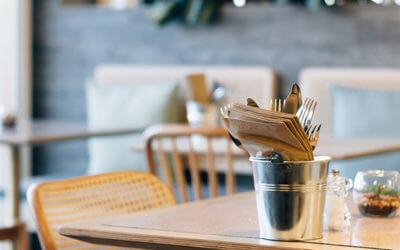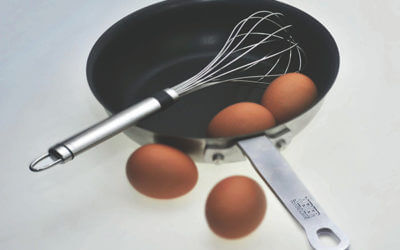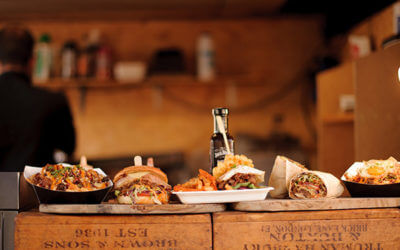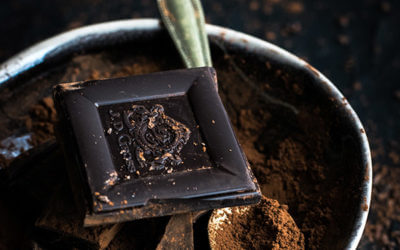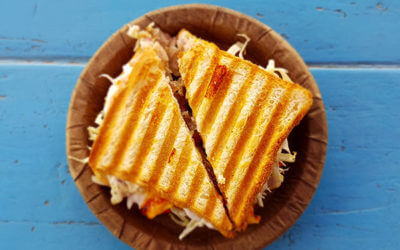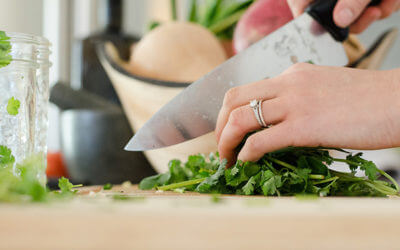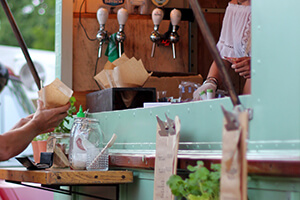5 Steps to Cutting Food Waste from Your Kitchen
August 15, 2017Food waste is a problem around the world.
Taking steps to prevent food waste in your kitchen doesn’t just make your restaurant more morally strong; it can also help you save money on ingredients and attract more customers. Here are some steps you can take to reduce food waste in your kitchen.
1. Track Your Food Waste
Tracking is the first step because it shows you whether you are making progress on reducing your waste. It also helps you to find out where the waste is coming from. Create a team that specifically looks for food waste at the end of each day. Also ask staff members to take notice of where the most food waste they see is coming from.
Your team is your best asset.
2. Educate Your Staff
You know how we said your team is your best asset? Well, they can’t be your best asset if they don’t know what is going on or how they can help. Educating your staff on the benefits of reducing food waste and what they can do to help will get them ready to be a part of the operation to cut your food waste.
3. Start Composting
Composting turns food waste into healthy soil additive. Many cities have started programs where residents and restaurants alike can compost. You simply separate all your food waste and send it to a compost facility. If your city doesn’t offer it, there are private companies and farms that will accept food waste to help them create fertile soil.
Composting allows your food waste to go towards creating something productive.
4. Incorporate Leftover Food in Meals
If you find you have a bunch of vegetables left over during the day, consider throwing them into a soup and serving it as a special. Adding some flexibility to your menu items can also give you the freedom to use foods that otherwise might end up in the trash. For example, having a salad on your menu that includes “seasonal vegetables” allows for different variations of the same menu item, allowing you to get more out of your kitchen ingredients.
5. Measure Types of Food
Sure, you have food waste, but what kind of food waste do you have? Is it lettuce scraps? Unused pasta? Knowing what type of foods you have left after a day of hard cooking lets you know what you can do with it. Is it food you could incorporate into other meals? Is it inedible and needs to be composted? Is it something you could provide to those who are homeless?
By measuring your food waste and separating it, you can determine what needs to be done.
Properly reducing and reusing food waste will help your restaurant become more sustainable. It will also attract the crowd of diners that appreciates the fact you are doing your best to help the environment.
Questions to Ask Before You Invest in Kitchen Equipment
When you invest in kitchen equipment, you want to make sure you’re getting exactly what you need and that it will last you a long time. It can be overwhelming to think about everything you need when you’re starting a restaurant. Even if you’re just trying to add or...
Uh Oh. Handling Restaurant Disaster Recovery
No one wants to think about a major disaster hitting their restaurant. Unfortunately, it can happen at any time. In Arkansas, large areas (including Little Rock) were declared disaster areas as recently as last summer. Severe flooding, wind damage, and tornados are...
Restaurant Supplies You Need: Technology in Your Business
Every business is impacted by technology, and restaurants are no exception. There are dozens of ways to use technology to build your business, improve your efficiency, and serve customers better. Sometimes restaurant owners feel like they’re too busy to implement new...
Key Restaurant Equipment for a Fast-Casual Restaurant
Fast-casual dining has changed how America eats and has impacted what people expect in terms of convenience, price, and food quality. Generally, fast-casual food is affordable and higher-quality than pure fast food. It’s a step above a McDonald’s, without the price or...
Equipment for Your Restaurant: Choosing a Restaurant Concept
Some people who start a restaurant know exactly what they want. They either buy an existing restaurant with a concept, or they create the menu based on their family traditions or ethnic flair. However, not everyone who wants to start a restaurant knows exactly what...
Restaurant Supplies: Using Herbs to Add Flavor to Your Dishes
If you’re looking for new ways to attract people to your restaurant, consider the ways you can add flavor without adding fat or calories. Consumers are more and more concerned about the quality of what they eat, both at home and in a restaurant. Home cooks generally...
Commercial Kitchen Debate: Stainless Steel vs. Non-Stick Pans
If you run a commercial kitchen, you probably have a lot of ways of doing things that just seem right to you. For whatever reason, you decided between a gas and electric stove. You made decisions about dishware. And you probably have a position on the stainless steel...
Restaurant Equipment: How to Handle Gluten Allergies
In the last five years, you’ve probably seen a dramatic increase in the number of restaurant customers you have that are avoiding gluten. Some of them simply don’t like it, and others have a life-threatening reaction if they eat it. As a restaurant owner, you want to...
Reduce Food Waste: Proper Kitchen Equipment and More
Food waste is a reality in any commercial restaurant, but it doesn’t have to be accepted blindly. Too many restaurant owners or head chefs feel as though there is nothing they can do about this waste. Fortunately, there’s a lot you can do to reduce food waste in your...
Restaurant Supplies: Furnishing an Outdoor Sitting Area
Outdoor dining is a very enjoyable experience for many people. In Little Rock the weather is generally pleasant, although humidity may make it hard to eat outside on the hottest summer days. Adding an outdoor sitting area to your restaurant can be a great way to...
Commercial Kitchen Fun: The Wonder of Chocolate
If there’s anything that almost everyone loves as much as coffee, it’s chocolate. In fact, there are multiple celebrations of chocolate each year. Chocolate Day is on July 7th, because historically that’s when chocolate was first brought to Europe in 1550. Don’t miss...
Cooking Equipment Spotlight: Safe Indoor Grilling
Indoor grilling is a great way for your restaurant to delight customers without having to run a big charcoal operation out back. There’s nothing like grilled meat and vegetables to put a great aroma in the air and encourage hungry diners to dig in. There are two...
Restaurant Supplies: How to Properly Store Spirits & Drinks
Spirits and other alcoholic drinks can add a lot to your bottom line as a restaurant. These drinks often have high margins, and people order more than one frequently. This leads to more revenue for your restaurant and better tips for your servers! In order to make the...
Going Green Can Benefit Your Commercial Kitchen
Do you feel like running a restaurant means that you have to give in to wasted food, materials, and even money? Great news – you don’t. If you want to build your business, consider going green! You can structure your commercial kitchen to help the planet while also...
Key Foodservice Equipment for Your Food Truck
Are you ready to start a food truck? While the restaurant industry climbs slowly at roughly two percent a year, the food truck industry has been booming. Growing nearly 8% per year over the last five years, trucks are one of the fastest growing parts of the food...




